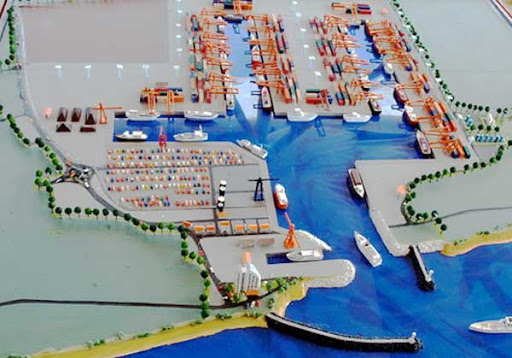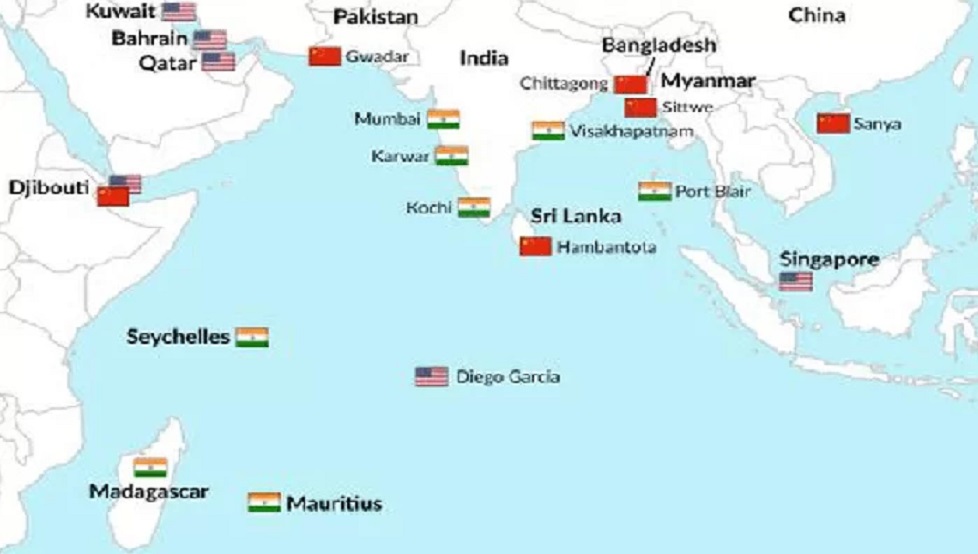Overseas military bases can strategically aid a nation during peacetime as well as during a war. China has mastered the art of establishing such bases around the world.
The use of foreign military bases and attempts by states to obtain access to other vital locations beyond their borders have formed an integral part of their national interests. In today’s world, overseas military sites are increasingly being used as staging points for non-combat and combat activities. A military base is a facility established or operated by the military or one of its branches that shelters military equipment and personnel and facilitates training and operations to pursue a country’s national security objectives. More than 1,000 military bases and installations exist worldwide; most of these are operated by the United States, which has a military presence in over several dozen countries. [1]
The military outposts in foreign nations are governed by agreements signed between the host nation and the base nation. The agreements are contractual in nature and, therefore, time-bound. Under the current international legislation, the use of force is strictly limited. As a result, foreign military sites are increasingly being used for peaceful purposes. Establishing military bases abroad allows a government to project soft power, for example, by conducting expeditionary warfare and thereby influencing critical events in other countries. They can be utilised as staging locations or logistical, communications, and intelligence assistance, depending on their size and infrastructure.
Strategic Purpose of Establishing Military Footprints in Foreign Nations
Strategic interests back the use of foreign military bases by nations. Historically, great powers constructed foreign military bases for essentially imperial purposes—to acquire additional territory, colonize new lands, control distant resources for the material benefit of the state, enable future conquest, and out-compete other empires. [2] Today, such conquests by great powers have declined, partly because of the ascendancy of post–World War II norms of territorial integrity and self-determination. [3]
Today’s forward-deployed posture is motivated by mainly three key strategic justifications:
- Serving as a Backbone of the Military Apparatus – Military bases serve as a projection of muscle power. They provide the logistical infrastructure required for rapid reaction to any significant military contingency or military manoeuvres. Such bases also host several active personnel’s and weaponry, including nuclear arms. Some foreign facilities serve as an information gathering hub and reconnaissance operations.
- To Deter Potential Threats and Reassure Allies – Military bases serve as a tangible indicator of a nations capability to fight and deter the potential threats by aggressors. The goal of forward deployment is to deter adversaries while also assuring and making allies feel safer.
- Protecting their National Interests – The establishment of a military presence is often motivated by the desire to safeguard one’s own interests and serve as a force for world peace. The domestic laws of several nations allow them to employ all necessary measures for national defense, including military installations abroad to protect national interests from external threats.
Overseas Bases in Indian Strategy
As India’s economy and global influence rise, there is a growing clamour for India to take on greater international obligations for the sake of worldwide prosperity and peace. The logic of India’s quest for foreign military bases is very similar to that of other nations. The security concerns are no longer limited to its borders, and it requires a forward military presence in the Indo-Pacific to protect its diverse interests. In recent years, India has sought to further develop its military access to Indo-pacific and Central Asia to secure its economic and national interests. India cannot afford to leave the Indian Ocean and other strategic arenas open to piracy. It should actively pursue diplomatic alliances, provide aid and assistance to the various players in the region, gain strategic ground, and use the relationship when the need arises. [4]
To thwart such threats, India is ramping up its assets and infrastructure. Some of the key Indian military installations are:
- Tajikistan – The Farkhor Airforce base was the 1st overseas base of India, operated by the Indian Air force and the Tajik Air force. This airbase occupies a unique strategic position because of its placement above Pakistan-occupied Kashmir and Afghanistan. It provides India with a strategic power projection point in Central Asia.
- Madagascar and Seychelles – India maintains two listening and radar stations in Madagascar and Seychelles. The significance of these two bases lies in their geographical location. Many of the sea routes around these countries are used by Indian cargo ships and other global commercial businesses, which helps track shipping movements in the Indian Ocean and listen in on maritime communications. Furthermore, these active bases help India to counter China’s String of Pearls strategy.
- Mauritius – India is constructing a military installation on North Agalega Island. This island, which is part of the India-Mauritius Military Cooperation, was leased to the Indian army to develop strategic assets. This outpost is located amid the Indian Ocean, at a very strategic location. This base will serve as an intelligence outpost for New Delhi to monitor and respond to threats emerging in the Indo-pacific region.
Foreseeable Challenges to Military Installations Abroad
Overseas military bases are a part of today’s foreign policy debates. As the circumstances of international politics have changed in the post–Cold War years, and as innovations in technology have both shortened travel times and made in-place forces more vulnerable, the strategic and operational utility of overseas bases receive scrutiny. [5]

Some of the challenges in maintaining permanent peacetime military presence abroad are:
- Exaggerated Deterrence Value – Foreign military bases do not minimalize external threats to homeland security. Infact, it can at times inspire blowback in the form of terrorism. Moreover, the development of incredibly precise long-range ballistic missiles, as well as advanced satellite-based sensors, puts foreign military installations vulnerable to asymmetric strikes that are difficult to defend against.
- Resentment among the Local Communities – Local resentment over the presence of foreign military bases can be extreme. Regime shift in a host nation can also factor in the resentment from regional communities.
- High Maintenance Costs – The financial burden on governments to maintain a global military base presence is exceedingly difficult to calculate. Logistical operations and infrastructure maintenances costs are prohibitively expensive.
- Risk of Entangling in Pointless Wars – Entanglement is another risk exacerbated by the attempt to reassure allies with overseas bases. [6] There is a possibility that the base nation may stumble into conflicts because of the assurance, commitments, and capabilities presented by a forward military installation.
Conclusion
Overseas military bases are no longer associated with hegemony or aggressiveness in today’s world. They are viewed from the perspective of assuring peace and global security. Great power logic, among other variables, always factors in the building of overseas outposts. Overseas outposts are meant to deter conflict and handle far-flung issues through deterrence and reassurance. Still, quite recently, they are receiving criticism and scrutiny because of the out-of-date foreign policy goals and traditional military power model. The military base building must involve shaping an international environment that reckons crucial issues concerning the reasons behind the base establishment.
Title Image Courtesy: https://eurasiantimes.com/chinese-military-base-in-the-indian-ocean-maldives/
Disclaimer: The views and opinions expressed by the author do not necessarily reflect the views of the Government of India and Defence Research and Studies
References
- Idsa.in. (2016). Sasi asked: Is it viable for India to set up military bases abroad? Which are the other countries with bases abroad and where all? | Manohar Parrikar Institute for Defence Studies and Analyses. [online] Available at: https://idsa.in/askanexpert/IsitviableforIndiatosetupmilitarybasesabroad
- Cato Institute. (2017). Withdrawing from Overseas Bases: Why a Forward-Deployed Military Posture Is Unnecessary, Outdated, and Dangerous. [online] Available at: https://www.cato.org/policy-analysis/withdrawing-overseas-bases-why-forward deployed-military-posture-unnecessary#the-rationale-for-overseas-military-bases
- Mark W. Zacher, “The Territorial Integrity Norm: International Boundaries and the Use of Force,” International Organization 55, no. 2 (Spring 2001): 215–50.
- The Geostrata (2021). India’s Overseas Military Bases. [online] THE GEOSTRATA. Available at: https://www.thegeostrata.com/post/india-s-overseas-military-bases
- Cato Institute. (2017). Withdrawing from Overseas Bases: Why a Forward-Deployed Military Posture Is Unnecessary, Outdated, and Dangerous. [online] Available at: https://www.cato.org/policy-analysis/withdrawing-overseas-bases-why-forward-deployed-military-posture-unnecessary#deterrence-and-reassurance
- See Joseph A. Bosco, “Entrapment and Abandonment in Asia,” The National Interest (online), July 8, 2013, http://nationalinterest.org/commentary/entrapment-abandonment-asia-8697?page=show; Glenn H. Snyder, “The Security Dilemma in Alliance Politics,” World Politics 36, no. 4 (July 1984): 461–95.
Title image courtesy:
Disclaimer: The views and opinions expressed by the author do not necessarily reflect the views of the Government of India and Defence Research and Studies





